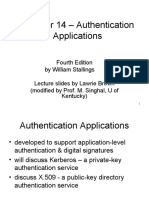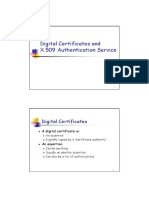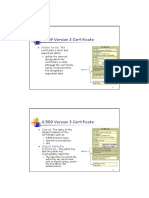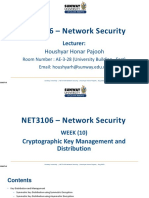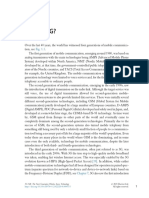0% found this document useful (0 votes)
89 views5 pagesCertificates Part2 PDF
The X.509 standard defines the format for digital certificates. A certificate contains the certificate version, serial number, signature algorithm, issuer name, validity period, subject name, subject's public key, and signature. Certificates are issued by Certification Authorities (CAs) and include the CA's signature. Multiple CAs can exist in a hierarchy, with CAs exchanging public keys so users can verify certificates issued by other CAs. CAs maintain Certificate Revocation Lists (CRLs) to revoke certificates before expiration if needed, such as if a user's private key is compromised.
Uploaded by
Shiva prasadCopyright
© © All Rights Reserved
We take content rights seriously. If you suspect this is your content, claim it here.
Available Formats
Download as PDF, TXT or read online on Scribd
0% found this document useful (0 votes)
89 views5 pagesCertificates Part2 PDF
The X.509 standard defines the format for digital certificates. A certificate contains the certificate version, serial number, signature algorithm, issuer name, validity period, subject name, subject's public key, and signature. Certificates are issued by Certification Authorities (CAs) and include the CA's signature. Multiple CAs can exist in a hierarchy, with CAs exchanging public keys so users can verify certificates issued by other CAs. CAs maintain Certificate Revocation Lists (CRLs) to revoke certificates before expiration if needed, such as if a user's private key is compromised.
Uploaded by
Shiva prasadCopyright
© © All Rights Reserved
We take content rights seriously. If you suspect this is your content, claim it here.
Available Formats
Download as PDF, TXT or read online on Scribd
/ 5















